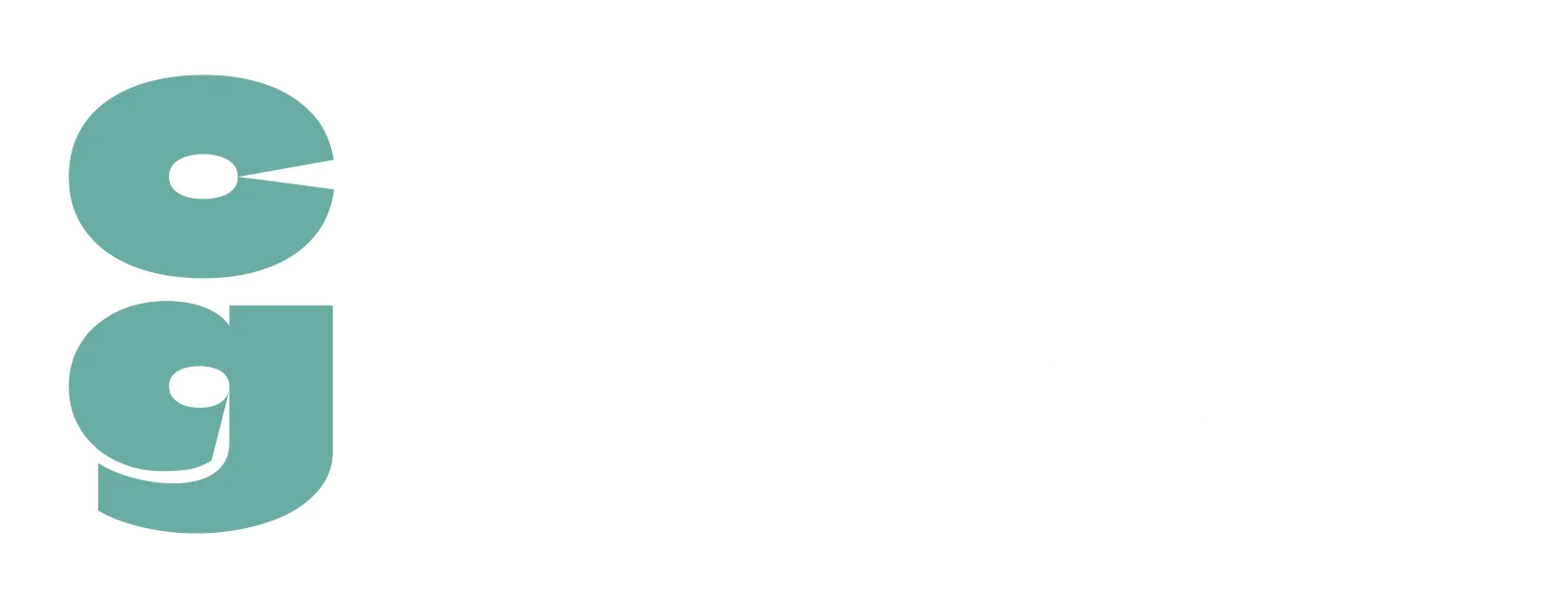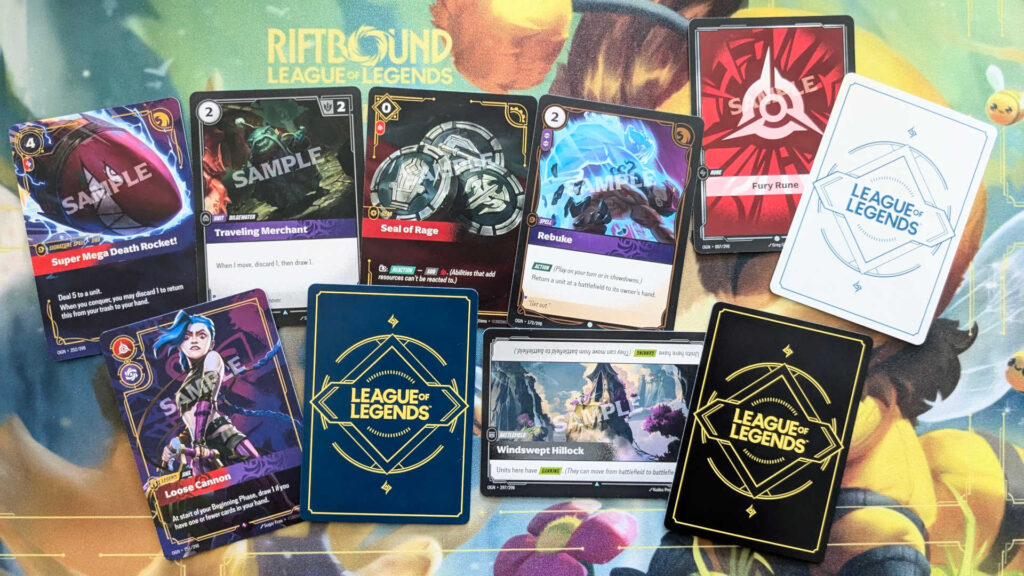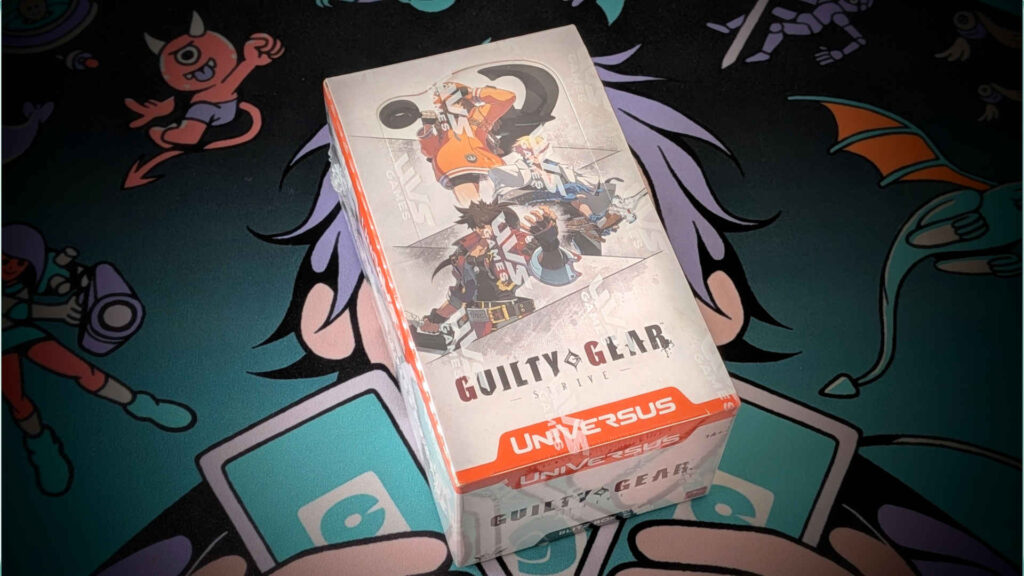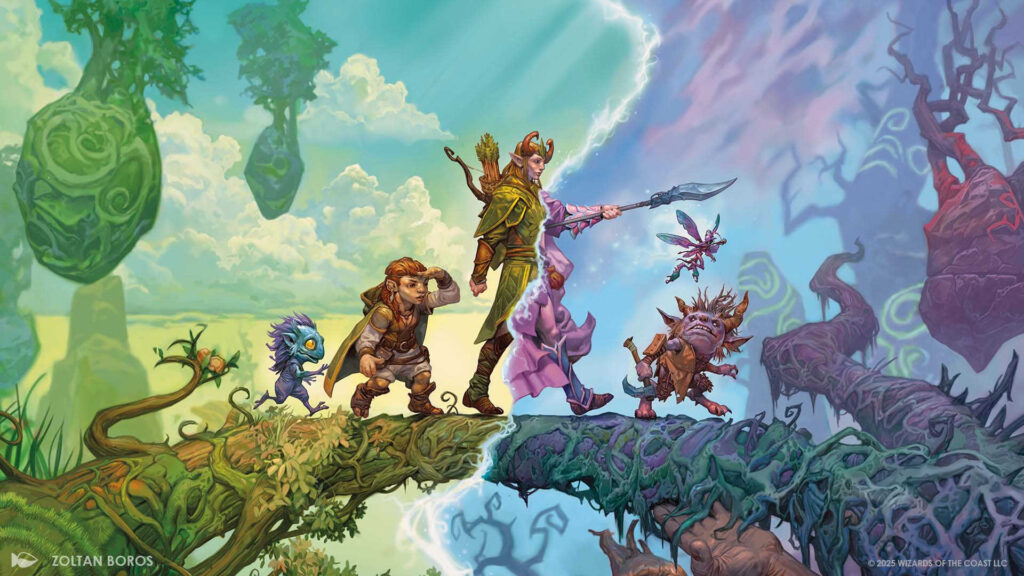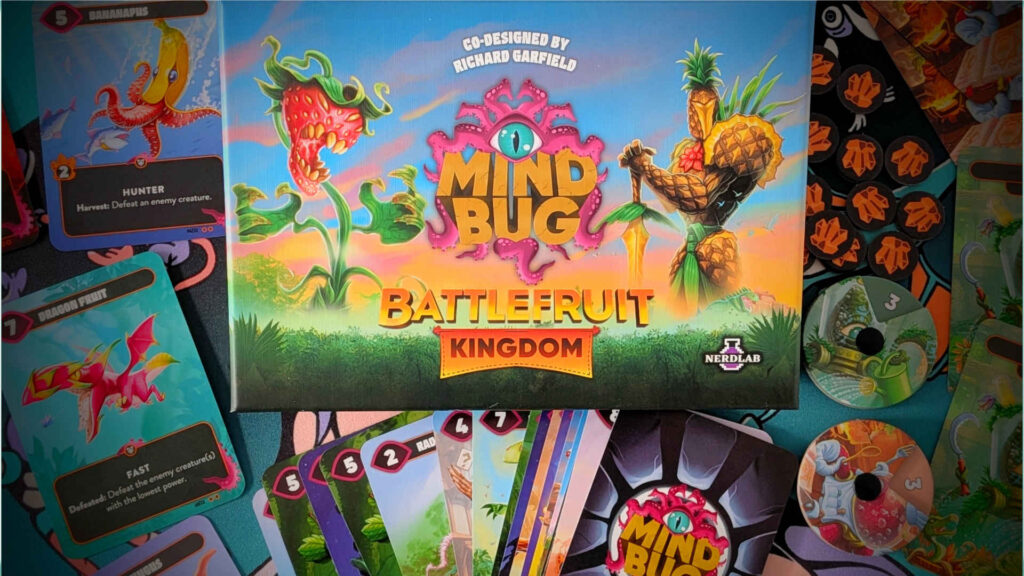Whenever a new card game arrives, it can be a bit daunting just learning the layout of each card, let alone the rest of the rules. Thankfully, Card Gamer is here to give you the lowdown on each different card type for Riftbound, the League of Legends Trading Card Game, so you have a head start in learning how everything works. Let’s take a look at the anatomy for each type of card in Riftbound!
Table of Contents
ToggleRiftbound Rune Card Anatomy
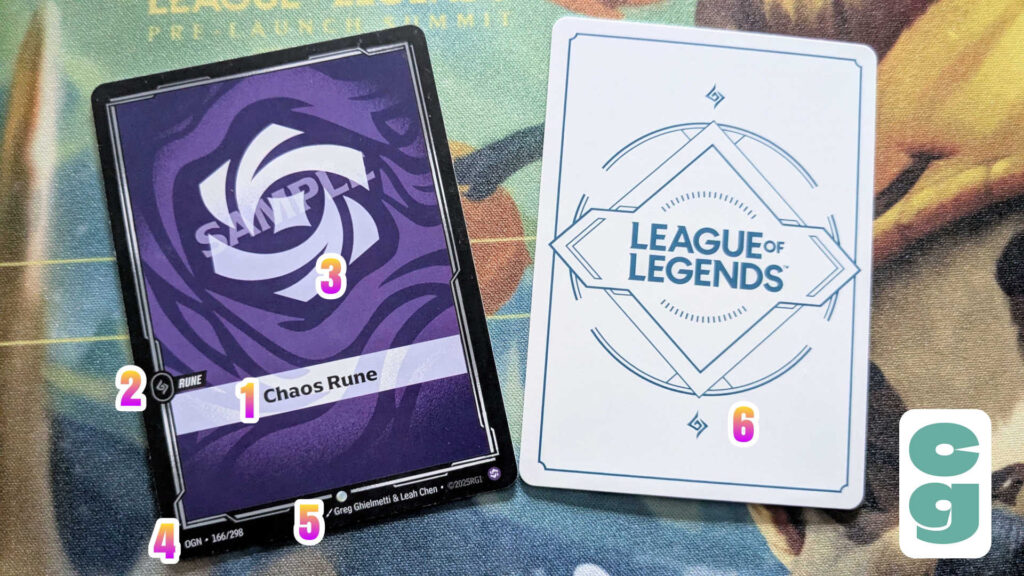
Rune cards are used as a resoruce to play other card types in Riftbound. Let’s look at each element of the card, with numbers shown in the image above:
- This is the card’s name. It shows what type of Rune the card is, and in this instance it’s a Chaos Rune.
- Here is the card type, for clarity. Of course, it’s a Rune card, as we know!
- The card’s artwork is here. It also shows the color of the Rune; Chaos Runes are purple.
- The set code (OGN, denoting that it’s from the Origins set), followed by the card number (in this example, 166/298) are shown here.
- The artist(s) responsible for the card’s illustration are credited here. Greg Ghielmetti and Leah Chen are the credited artists for the Chaos Rune card in the image.
- Finally, the card back is here; different types of Riftbound cards have different colors (explained here), with Rune cards having white colored backs.
You can learn more about Riftbound Rune colors in our handy guide.
Riftbound Battlefield Card Anatomy
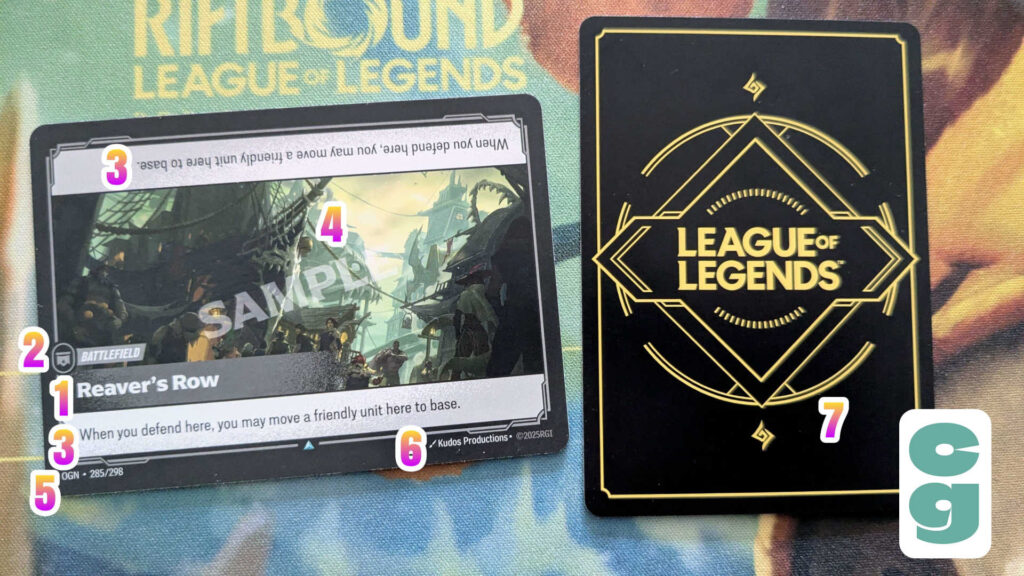
In Riftbound, Battlefield cards are where most of a player’s points are scored. Conquering a Battlefield (or starting a turn as the only player at a Battlefield card) earns a player one point. Once a player has scored 8 points, they win the game. So you can see why they’re so important! Let’s take a look at the anatomy of Battlefield cards in Riftbound:
- Here is where you find the card name. In the above image, the card is named Reaver’s Row.
- The card type, Battlefield, is shown here.
- This show’s the Battlefield’s abilities. Note that this appears twice on a Battlefield card, with one side facing your opponent. That’s because you’ll both have cards on your respective side of the Battlefield, so you’ll need to be able to easily read the ability on the card.
- This is the card’s artwork.
- Just like the Rune card, here you’ll see the card’s set code (OGN) and card number. In this case, it’s card 285/298.
- The card’s artist is credited here. In this case, it’s Kudos Productions who have created the card’s illustration.
- Finally, the card back for a Battlefield is black. This is also the case for other card types, as you’ll see.
Riftbound Legend Card Anatomy
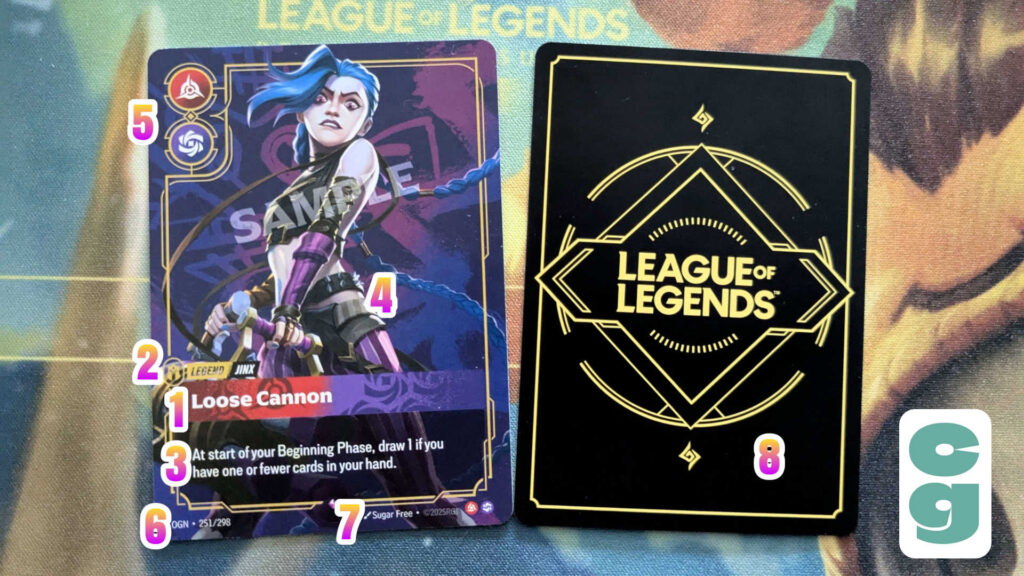
In Riftbound, each player has a Legend card, which is used as the basis to build their deck. The Rune colors you can use in your deck are determined by the colors on your Legend card. As well as this, your deck’s entire strategy should be built around what your Legend’s ability is. Let’s take a look at the Riftbound Legend card anatomy:
- This is the name of the card, which also shows the Rune colors. So the above card is named Loose Cannon, with this section of the card showing the red and purple colors.
- Here’s not only the card type, but also any extra names or types the card may have. Loose Cannon is a Legend card, but is also named Jinx. Both of those pieces of information appear here!
- This shows the Legend’s ability. In this case, players using the Jinx, Loose Cannon card will draw 1 card at the start of their Beginning Phase, if they have 1 or fewer cards in their hand.
- The card’s artwork is found here.
- Though the Legend’s card colors are shown across the name section, the symbols and colors of the Runes can also be found here. Note that a deck may only contain cards which share the same colors and symbols as those found on the Legend card in use.
- This is a standard section of a Riftbound card; it shows the set code and card number.
- The card’s artist is credited here.
- Legend cards also have a black colored back. The black colored card backs denote cards you’ll play face up, during setup. These are separate to the Rune deck (white colored) and draw deck (blue colored) cards, all of which enter play as decks, face down.
For a look at all Origins Legend cards, check out our guide.
Anatomy of Other Riftbound Card Types
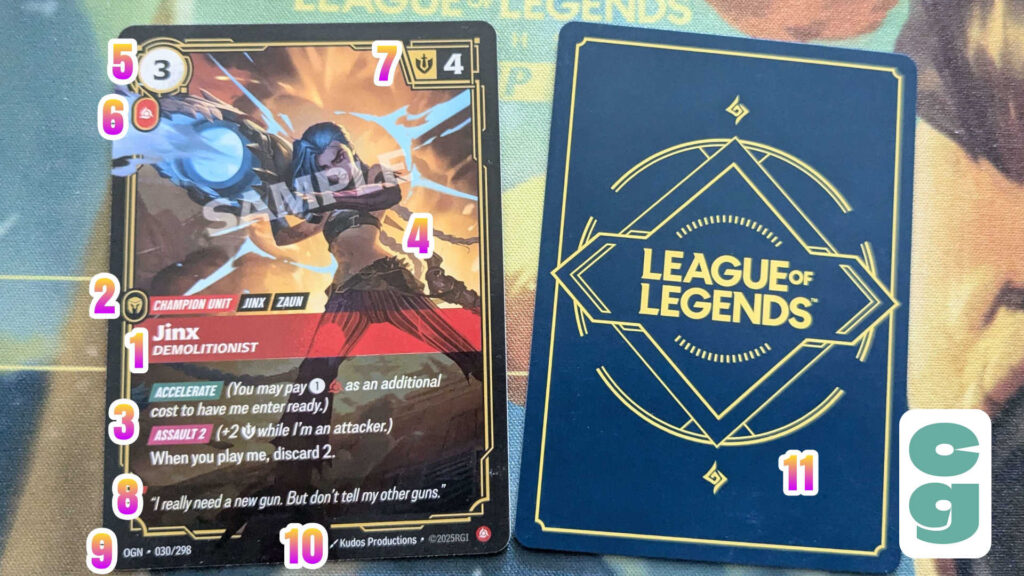
All other card types in Riftbound have a blue colored back, and these form your main draw deck. Though there’s a Champion Unit card shown in the image above, other types of cards have the same layout, which you’ll see following the anatomy guide:
- This is the card name. In the example above, it’s Jinx, Demolitionist. This also shows the card color (red in this example).
- The card type (Champion Unit in this image) plus its types (Jinx, Zaun) are shown here.
- The card’s abilities are here. Jinx, Demolitionist has two abilities that she can use, both explained in this section.
- You’ll find the card’s artwork here.
- This is the card’s cost. You pay this with Rune cards you have in play, by turning active (upright) Runes sideways (or “exhausting” them).
- Not all cards have this, but the symbol here shows the color and number of Runes which need to be recycled. This is an extra cost to play some cards, and you can read more about it in our Riftbound recycling guide. If multiple Runes need to be recycled for this cost, there will be multiple symbols, rather than a number.
- This is a Unit’s Might, and doubles as a Unit’s starting health, as well as the damage it deals in combat. If a Unit takes points of damage equal to (or more than) its Might, it is discarded.
- This is flavor text; it has no bearing on play whatsoever, but will give you lore or dialogue relating to the card’s character or effect.
- Once more, here we have the set code and card number.
- Again, here’s the artist credit (Kudos Productions).
- Finally, this is the card back. As previously noted, these card types have blue colored backs.
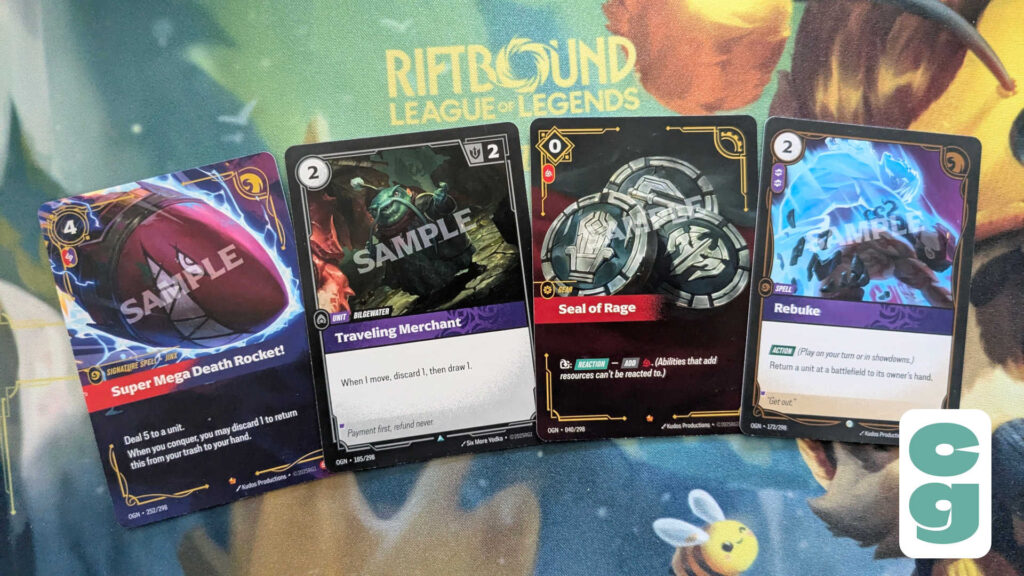
Other card types are shown above. From left to right, we have a Signature Spell, a Unit, a Gear card and a Spell card. All have the same layout as the Champion Unit in the example we’ve just seen, though Spell and Gear cards don’t have Might (as you can see above).
If you’d like to check out more details on Riftbound, take a look at our first impressions feature. You can also take a look at the full list of exclusive cards in the Riftbound beginner box set, Proving Grounds!
